| Gemstone Chart |
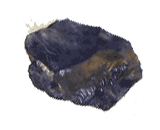 Natural Iolite Natural Iolite
Iolite is a popular and interesting gemstone, and is the gem variety of the mineral cordierite.It has also been called water sapphire because it looks very much like a blue sapphire.
Color: violet, blue, dark blue,
Categories: semi-precious stone
Chemical Composition: MG2AL4SI5O18
Crystal Group: Orthorhombic
Refractive Index: 1.53 - 1.55
Hardness: 7 - 7.5
Density: 2.57 - 2.66
Occurrence: Sri Lanka; Burma; India; Tsivory,Madagascar; Canada; Namibia; Tanzania; Norway; U.S.A.; Brazil
| 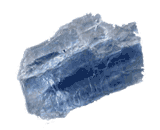 Natural Kyanite Natural Kyanite
Kyanite is a calming stone. It helps to quiet the mind, dissolving emotional, mental, or spiritual confusion, and letting go of anxiety.
Color: Blue, Greenish Blue.
Categories: semi-precious stone
Chemical Composition: AL2SIO5
Crystal Group: Triclinic
Refractive Index: 1.716 每 1.731
Hardness: 4.5 每 7.0
Density: 3.56 每 3.68
Occurrence: Kenya, Nepal, India, Burma,U.S.A.
| 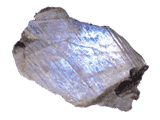 Natural Moonstone Natural Moonstone
The most common moonstone is of the mineral adularia.It is an opaque stone, a simi-clear white, kind of the color of watered down milk.Moonstone Jewellery uses the gemstone moonstone as its main stone.
Color: white, blueish white.
Categories: semi-precious stone
Chemical Composition: KalSI3O8
Crystal Group: Monoclinic
Refractive Index: 1.518 每 1.526
Hardness: 6 每 6.50
Density: 2.55 每 2.57
Occurrence: Sri Lanka, India, Madagascar, Burma, Tanzania, U.S.A.
| 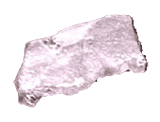 Natural Oligoclase Natural Oligoclase
Oligoclase is a rock-forming mineral belonging to the plagioclase feldspars. Oligoclase is famous for its two gem varieties: Sunstone and Moonstone.
Color: green, orange, red, colorless
Categories: semi-precious stone
Chemical Composition: [Na,Ca]AlSi3O8
Crystal Group: Triclinic
Refractive Index: 1.53 - 1.54
Hardness: 6 - 6.5
Density: 2.62 - 2.65
Occurrence: Tvedestrand and Hitero on the south coast of Norway; near Lake Baikal Russia; Ontario, Canada; Tanzania; Kangayam, southern India; France; and in Maine, New Mexico, New York, North Carolina, Pennsylvania, Virginia and Oregon in the USA.
| 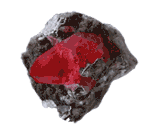 Natural Rhodochrosite Natural Rhodochrosite
Rhodochrosite is a manganese carbonate mineral with chemical composition MnCO3. The pink color of rhodochrosite is caused by the element manganese and it is formed when manganese is dissolved by ground water and combines with a carbonate material and then drips off the ceiling of caves and crevices deep underground.Rhodochrosite often forms pink and white bands. It is often carved into figurines or boxes while the tubular stalactite formations are often sliced for use in jewelry. Fine gem quality crystals are sometimes cut into gemstones for use in high end jewelry, but the more common grade is used extensively in silver and gold jewelry.
Color: Rose red, raspberry red, pink, grey, fawn, brown
Categories: semi-precious stone
Chemical Composition: MnCO3
Crystal Group: Trigonal
Refractive Index: 1.600 每 1.820
Hardness: 4
Density: 3.45 每 3.70
Occurrence: Argentina; Colorado, U.S.A.; Romania; Hungary; India; South Africa; Saxony, Chile; Peru; Mexico.
| 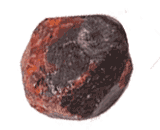 Natural Rhodolite Natural Rhodolite
Rhodolite is a beautiful pink to violetish red garnet which was named after the rhododendron flower. Commercially rhodolite is one of the most important garnets. Rhodolite is quite available in small sizes which are relatively low in price. Very fine large rhodolite garnets are rare and are moderate in price.
Color: red, purple-red
Categories: semi-precious stone
Chemical Composition: Al2(SiO4)3
Crystal Group: Cubic
Refractive Index: 1.75 - 1.77
Hardness: 7.25
Density: 3.74 - 3.94
Occurrence: Brazil, East Africa, Ceylon, India, Madagascar, Zimbabwe
| 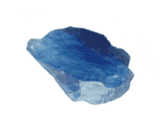 Natural Sapphire Natural Sapphire
Sapphire is a gemstone variety of the mineral corundum,Blue is the main colour of the sapphire. Its beauty, its magnificent colours, its transparency, but also its constancy and durability are qualities associated with this gemstone by gemstone lovers and specialists alike.Fancy sapphires are pure individualism and are just made for lovers of individualistic coloured stone jewellery. They are currently available in a positively enchanting variety of designs - as ring stones, necklace pendants or ear jewellery.
Color: blue, bluish purple, bluish violet, greenish yellow, orangy yellow, purple, red, reddish orange, red-orange or orange-red, reddish purple, red-purple or purple-red, slightly purplish red, violet, violetish blue, yellow, yellowish orange, pink
Categories: precious stone
Chemical Composition: AL22O3
Crystal Group: Hexagonal
Refractive Index: 1.759-1.778
Hardness: 9
Density: 4
Occurrence: Sri Lanka, Burma, India, Kenya, Tanzania, Madagascar, Thailand, U.S.A., China
| 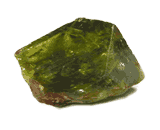 Natural Sphene Natural Sphene
Sphene is also known as calcium titanium silicate.It is named from the greek word for wedge, because of its typical wedge shaped crystal habit.Because of it's high dispersion and refractive index, a well cut sphene can display stunning brilliance. Sphene is somewhat soft and as a result is more suitable as a pendant than as a ring stone. Sphene is rarely very clean.
Color: Green, yellow. brown
Categories: semi-precious stone
Chemical Composition: CaTiSiO5
Crystal Group: Monoclinic
Refractive Index: (1.885-1.990,)-(1.915-2.050)
Hardness: 5.5
Density: 3.52-3.54
Occurrence: Austria, Dheirene-Madagascar, India, USA, Brazil.
|
|
